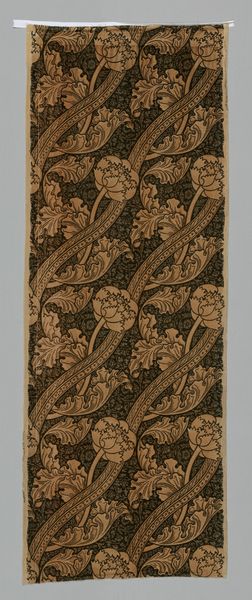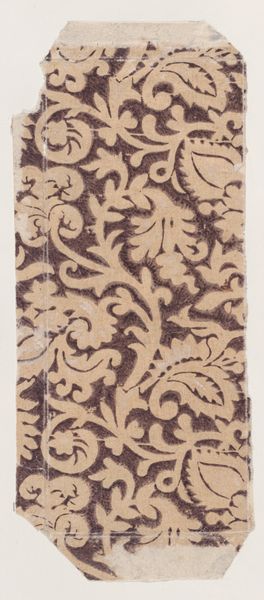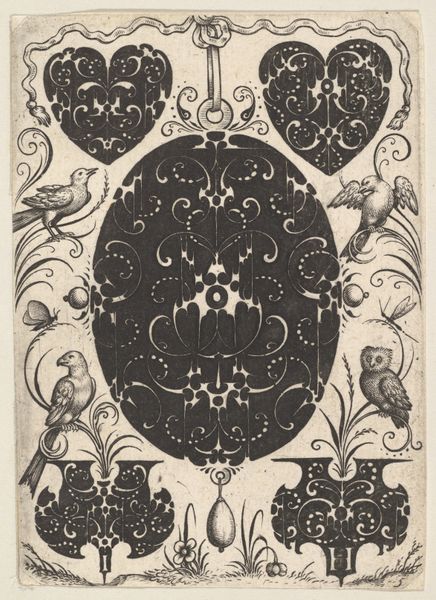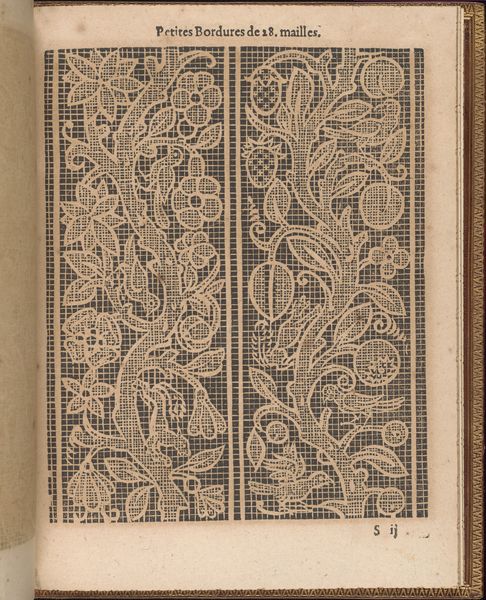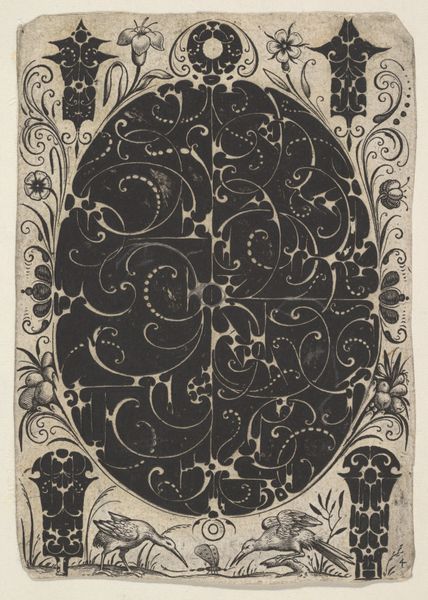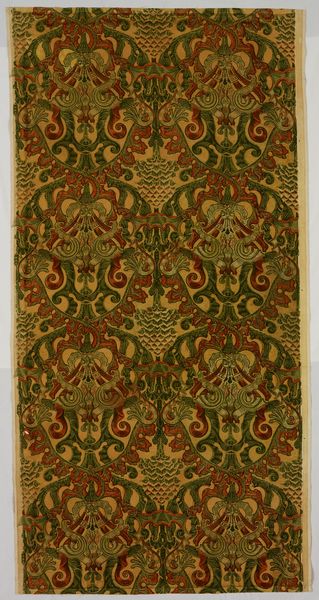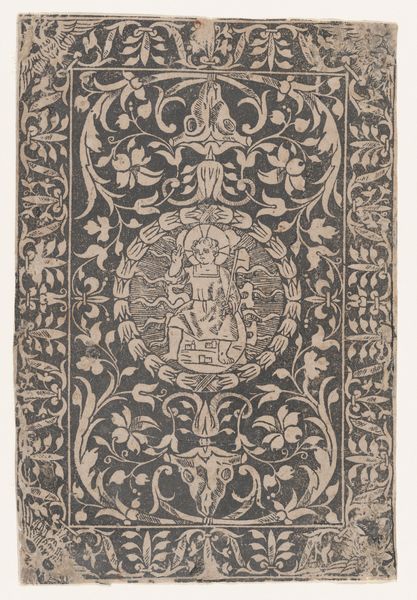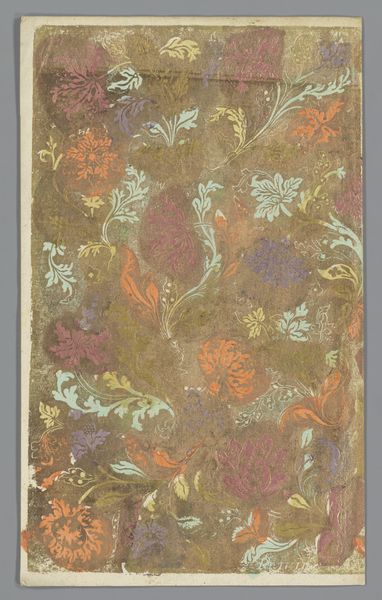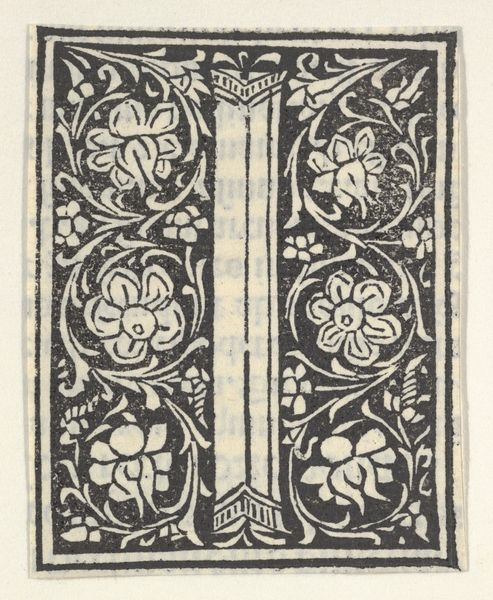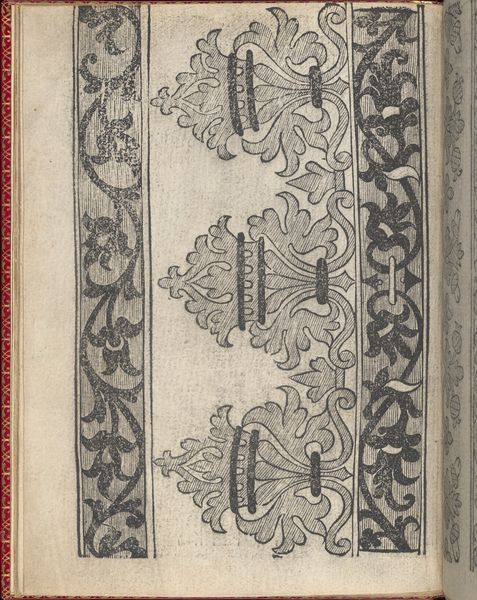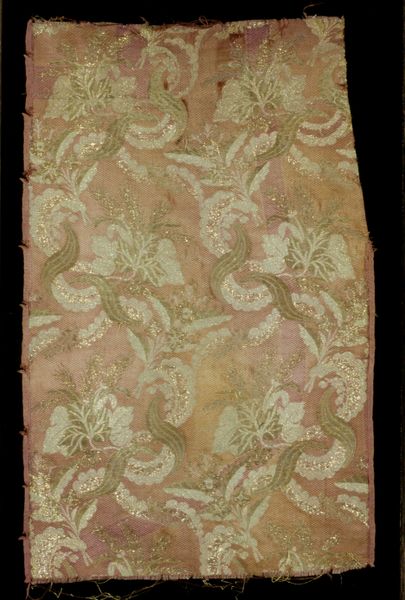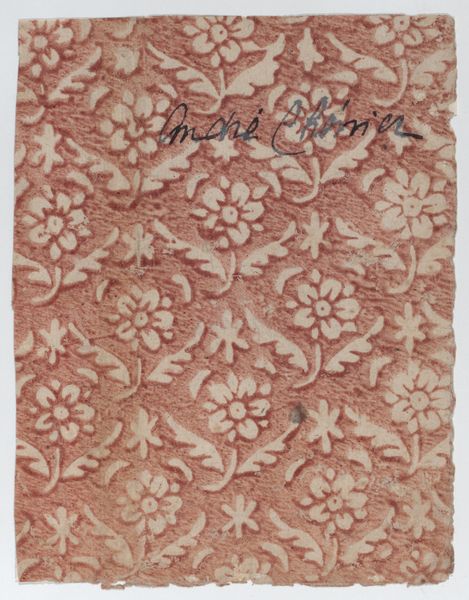
fibre-art, textile
#
fibre-art
#
naturalistic pattern
#
organic
#
arts-&-crafts-movement
#
textile
#
geometric pattern
#
organic pattern
#
decorative-art
Dimensions: height 157.5 cm, width 64.3 cm
Copyright: Rijks Museum: Open Domain
Curator: Immediately I see elegance; this weaving arrests attention with its flowing forms, balanced asymmetry, and what I'd almost call reserved color scheme. Editor: I would agree. What we have here is a fragment of printed velvet, a textile, dating from around 1890 and bearing the title “Florence.” It's attributed to John Henry Dearle, a prominent figure associated with the Arts and Crafts movement. Curator: Arts and Crafts, certainly. That focus on traditional craftsmanship and naturalistic forms sings out. The repeated pattern, though, transcends mere decoration. Notice how the sinuous curves of the stems draw your eye upwards and then downwards in a graceful rhythm, a sort of visual mantra. Editor: Indeed. The choice of velvet adds a tactile dimension, wouldn't you agree? Imagine this as a curtain or upholstery. The nap would absorb and reflect light, creating subtle shifts in tone as you move around it, subtly enlivening the composition. From a purely structuralist viewpoint, the weaving’s threads themselves represent an ordered sequence and elaborate construction. Curator: Precisely, that interplay of light and shadow amplifies its symbolic resonance. Textiles have always held a powerful, emotional place. Consider the comfort a child gets from a favorite blanket. This is where this piece's potential lies: an intricate design speaking to deeply rooted needs. There is comfort but also pride to be taken from such pieces, marking cultural shifts. Editor: Yet, one could also see in its repeated floral motifs a commentary on nature and industrialization. In semiotic terms, the stylized flowers are not just representations of flora, but signify ideals of beauty, nature, perhaps even a nostalgia for pre-industrial simplicity that permeates the Arts and Crafts Movement. Curator: Perhaps. It makes you reflect on the symbolism in such a visually dense piece. Ultimately, though, I think it's about embracing organic growth but within self-imposed limits, just like culture is often a form of artificial manipulation on nature. Editor: A compelling reading, emphasizing control over chaos. Yes, that structured fluidity speaks to both the movement's ideals and Dearle's mastery. Curator: This has been enlightening, revealing how a single piece of decorative art holds such layered meanings. Editor: Quite. And I would suggest to remember that such work cannot be reduced to such readings, and it also allows us to further our understanding of it.
Comments
No comments
Be the first to comment and join the conversation on the ultimate creative platform.
